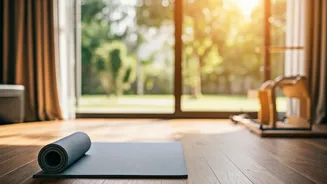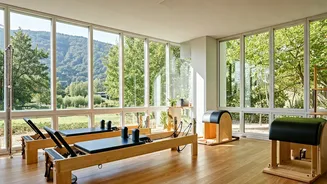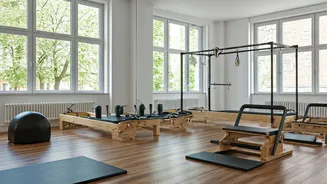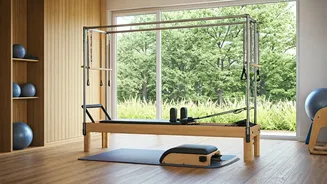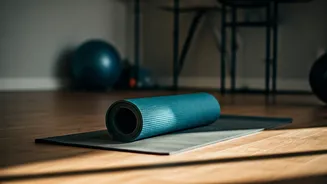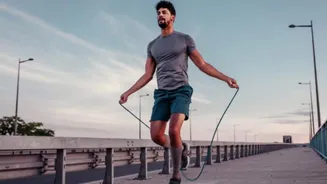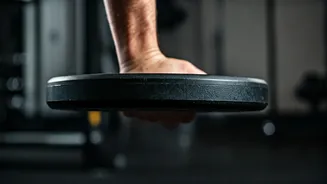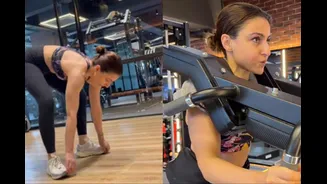Pilates: Home Advantage
Pilates offers an accessible and versatile workout option, especially beneficial for those preferring home exercises. Unlike gym memberships or the unpredictable
nature of outdoor walking, Pilates can be done anytime, anywhere, eliminating travel time and the need for specialized equipment, making it a sustainable and time-efficient choice for many. This flexibility is a significant advantage, allowing for integration into even the busiest schedules. Pilates emphasizes core strength, flexibility, and controlled movements, providing a full-body workout that's gentle on the joints while still being highly effective in building strength and improving posture. This makes it an attractive alternative for individuals of all fitness levels. Furthermore, the focus on body awareness helps in preventing injuries and promotes better overall well-being. For those with limited space or resources, Pilates offers a practical solution to stay active and healthy.
Core Strength Champion
One of Pilates' primary strengths lies in its focus on core strengthening, which is a significant departure from standard gym routines. Pilates exercises are designed to engage the deep abdominal muscles, improving stability and posture. In comparison to walking, which predominantly works lower body muscles, Pilates comprehensively addresses the core, essential for everyday activities and preventing back pain. A strong core is the foundation for almost every movement. By strengthening these muscles, Pilates enhances balance, coordination, and overall functional fitness. This is often missing in traditional gym workouts, which might prioritize isolated muscle groups. As you engage in regular Pilates practice, you’ll notice improved posture and a reduced likelihood of injuries, making it a valuable method for all ages and fitness levels. The emphasis on controlled breathing further enhances the effectiveness of each exercise, promoting mindful movement and a stronger connection between mind and body.
Flexibility & Mobility Boost
Pilates excels in enhancing flexibility and improving mobility, setting it apart from typical gym exercises. Many gym workouts prioritize strength training over flexibility, potentially leading to muscle imbalances and reduced range of motion. Walking, while beneficial, doesn't offer the same degree of targeted stretching and lengthening that Pilates provides. Pilates exercises incorporate a variety of stretches and movements that enhance flexibility. These exercises release tension and lengthen muscles, which can reduce stiffness and improve joint health. The focus on controlled movements builds both strength and flexibility simultaneously. This is particularly advantageous for those who spend a lot of time sitting, as Pilates can counteract the negative effects of a sedentary lifestyle. Improved flexibility also reduces the risk of injuries. Over time, consistent Pilates practice can lead to a noticeable increase in ease of movement, improving overall well-being. The emphasis is on long, lean muscles and a more supple body.
Low-Impact Excellence
Pilates is inherently a low-impact exercise method, making it exceptionally accessible to a broad demographic, including those with joint issues or recovering from injuries. Unlike many gym exercises that involve high-impact activities, such as running, jumping, and lifting heavy weights, Pilates minimizes the stress on joints. Walking is also generally low-impact. The controlled movements and focus on core engagement support the body, reducing the risk of injuries. This makes Pilates a safe and effective exercise option for people of different ages and fitness levels. This approach allows practitioners to focus on building strength and improving overall fitness without the associated risks of higher-impact routines. The gentle nature of Pilates also facilitates quicker recovery times. The controlled movements of Pilates enhance muscle control and reduce the stress placed on joints. This makes it a sustainable exercise option for the long term.
Mind-Body Connection
Pilates emphasizes the connection between the mind and body. This aspect differentiates it from gym workouts, which can sometimes focus solely on physical exertion. Walking provides a degree of mindfulness, but Pilates takes this to a deeper level. Each exercise requires concentration, controlled breathing, and a focus on proper form, encouraging a heightened awareness of body mechanics. This mental engagement enhances the effectiveness of each movement, promoting a deeper understanding of one's own body. The heightened awareness reduces the risk of injury and increases the effectiveness of the exercise. This holistic approach leads to a more balanced and effective workout experience. The mind-body connection fostered by Pilates offers a unique advantage. The mindful nature of the practice promotes relaxation, reduces stress, and fosters a sense of well-being. Pilates practitioners often report not only physical benefits but also improvements in mental clarity and focus.
